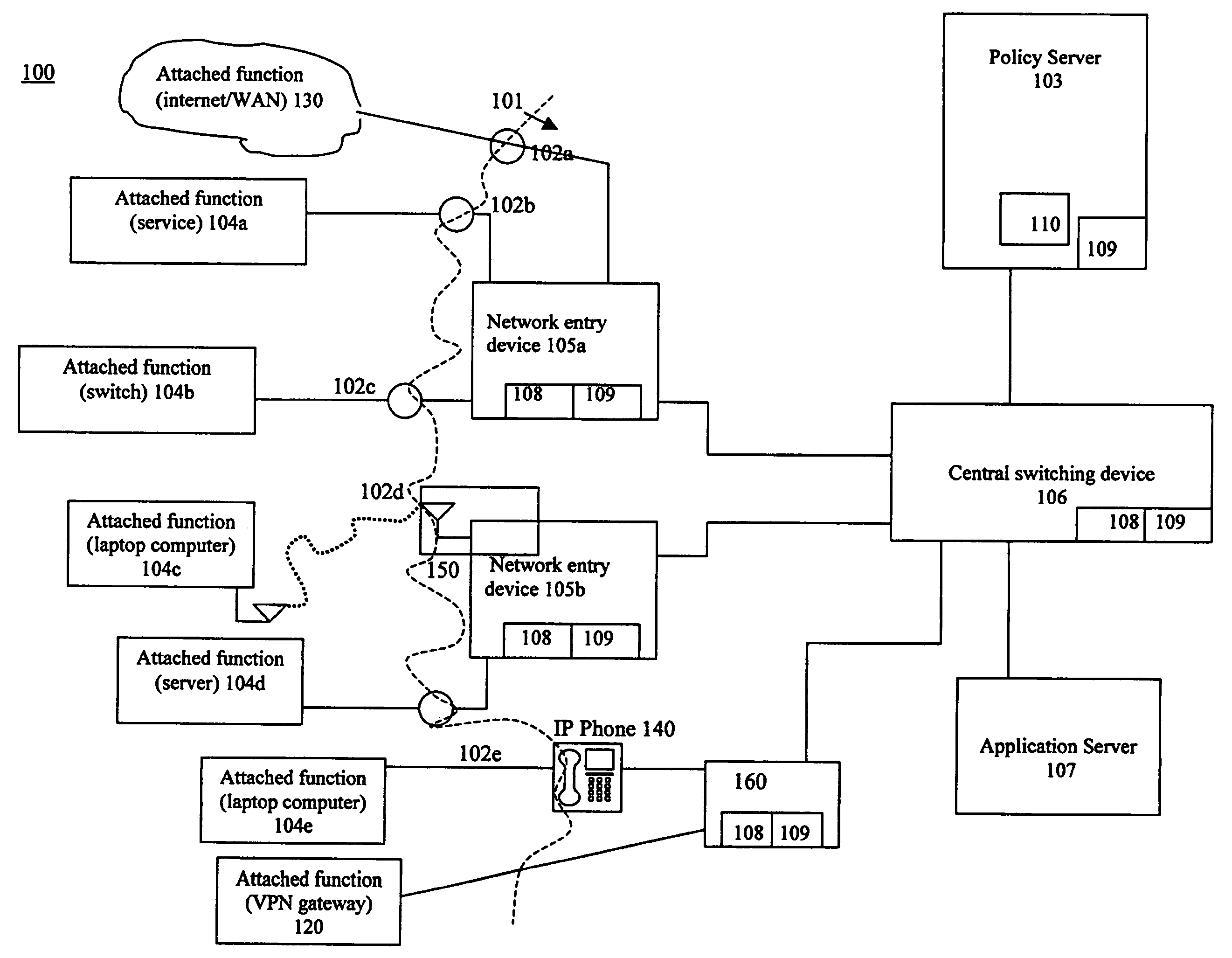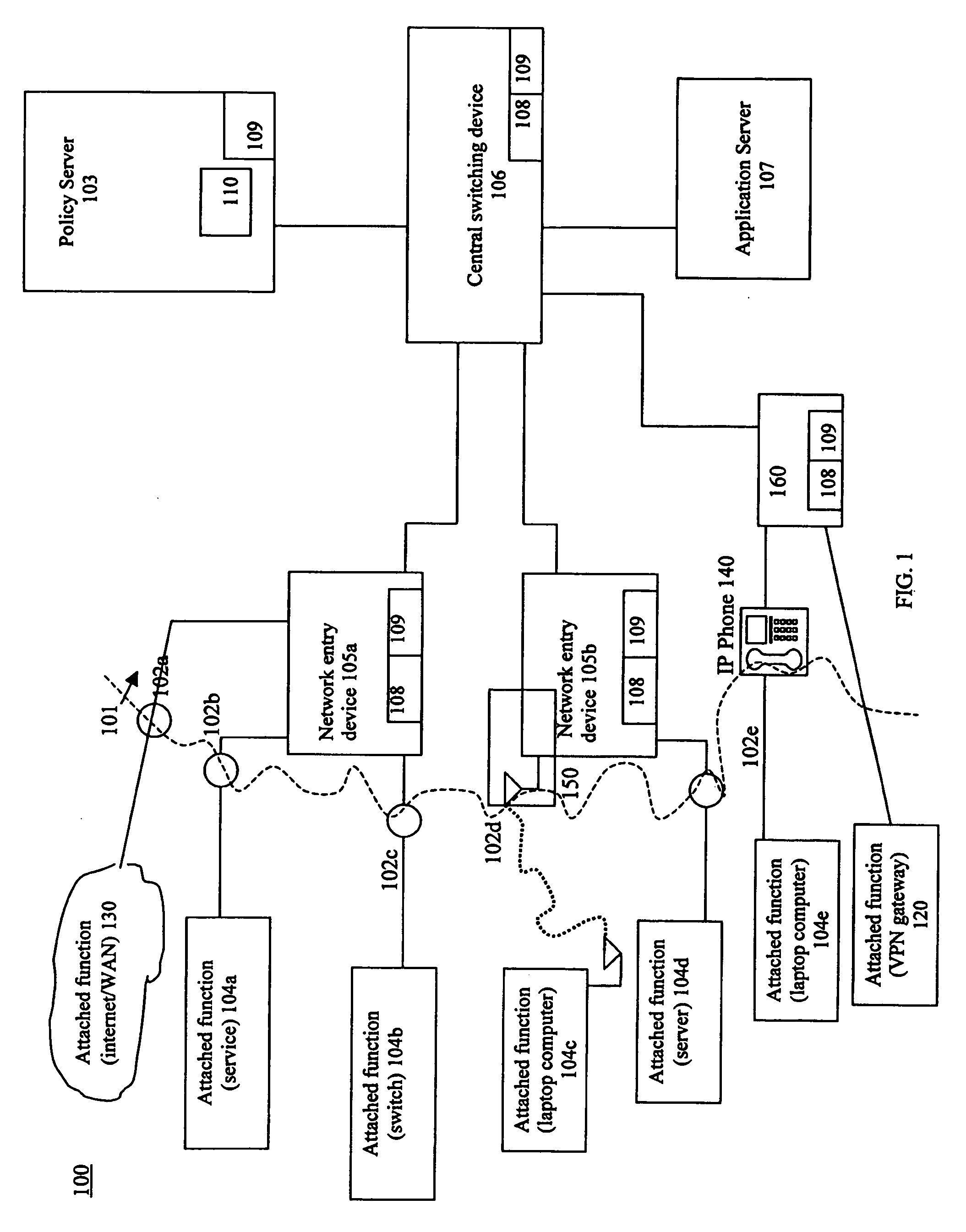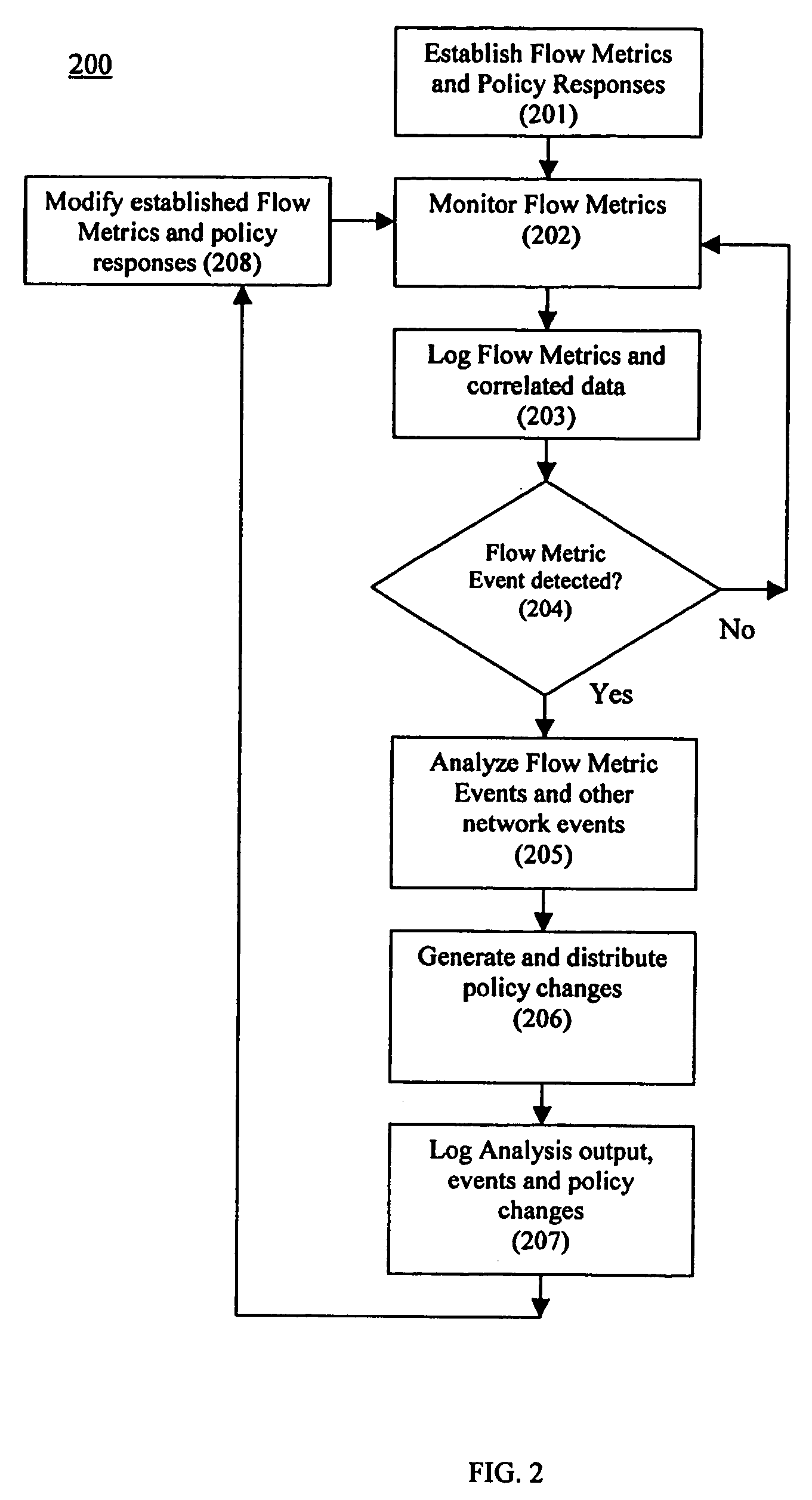Using flow metric events to control network operation
a technology of flow metric and network operation, applied in the field of network communication system methods and systems for detecting and mitigating the effects of flow anomalies, can solve the problems of limiting the access to applications, files, databases, programs, etc., harming the network system, and limiting the access to the remainder of the network, so as to reduce the impact on the rest and mitigate the effect of changes in network access and us
- Summary
- Abstract
- Description
- Claims
- Application Information
AI Technical Summary
Benefits of technology
Problems solved by technology
Method used
Image
Examples
Embodiment Construction
[0030] The present invention is a system and related method to detect through one or more network infrastructure forwarding devices potentially or actually harmful activity in network system packet or signal traffic. The detected information is analyzed and reported to a centralized or distributed policy management and enforcement function, acted upon by the detecting device or devices, or a combination of the two. Generally, the system provides a method for using flow metrics to determine whether operation of a portion or all of a network system should be adjusted, such as through dynamic policy changes, based on a triggering condition. Referring to FIG. 1, a network system 100 incorporating the capabilities of detection, analysis and response to triggering events based on flow metrics is shown. A simplified version of the system of the present invention is a typical local (all the functions in a single device) implementation that merely detects a predetermined flow condition and i...
PUM
 Login to View More
Login to View More Abstract
Description
Claims
Application Information
 Login to View More
Login to View More - R&D
- Intellectual Property
- Life Sciences
- Materials
- Tech Scout
- Unparalleled Data Quality
- Higher Quality Content
- 60% Fewer Hallucinations
Browse by: Latest US Patents, China's latest patents, Technical Efficacy Thesaurus, Application Domain, Technology Topic, Popular Technical Reports.
© 2025 PatSnap. All rights reserved.Legal|Privacy policy|Modern Slavery Act Transparency Statement|Sitemap|About US| Contact US: help@patsnap.com



